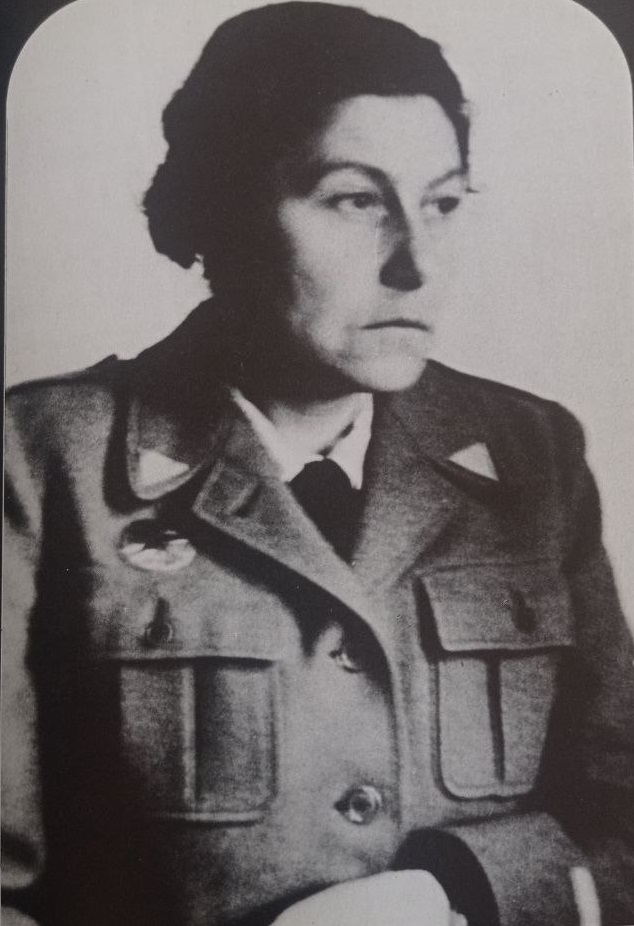By Stefan Gužvica
Irma Rothbart was born in Budapest on 30 November 1896, into a family of a rich grain merchant from Bácska. She studied Hungarian and German, but gave up linguistic studies due to the revolution for the world war, and decided instead to pursue medicine as a more practical profession. In 1918, she became a member of an anti-militarist group in Budapest, and then, under the influence of rapidly spreading revolutionary ideas, increasingly turned to Marxism. In November, she became a member of the newly-established Hungarian Association of Young Communist Workers. She was one of the founders of the Internacionálé magazine in January 1919, which would become the official theoretical journal of the Party of Communists in Hungary. In order to start the magazine, Rothbart entered a fictional marriage with her party comrade Gyula Hevesi. They obtained the dowry from her rich parents and used it to fund the journal and other communist activities. When the Hungarian Soviet Republic was established in March 1919, she became an employee of the People’s Commissariat of Education under György Lukács. She worked in the division for propaganda and youth work. During the Hungarian Commune, she became a member of the Central Committee of the Hungarian Association of Young Communist Workers.
After the fall of the Hungarian Soviet Republic, Irma Rothbart continued to work illegally for the Central Committee. She was arrested as a communist, but managed to escape to prison and get to Austria. There she married a fellow communist named Ervin Sinkó, a writer from Apatin in Yugoslavia. In Vienna, she worked in the secretariat of the Hungarian communist youth and finished her studies of medicine, becoming a doctor in 1926. After obtaining her degree, Rothbart moved to Yugoslavia with Sinkó, where they would stay until 1932. They spent several years in the village of Prigrevica by Apatin, where they were exiled and kept under police supervision as prominent communists.
In 1932, Ervin and Irma moved to Paris, where she worked as a typist, and he tried to make a name for himself as a writer. At the initiative of Romain Rolland, the couple moved to Moscow in 1936, hoping to publish there Sinkó’s novel on the Hungarian Revolution, titled The Optimists. They would spend two years in the USSR, where Irma Rothbart-Sinkó worked as a doctor. Enchanted by the Soviet Union at first, Irma was disappointed when, soon after their arrival, the country banned abortion, and was disheartened to see all her colleagues go overnight from enthusiastic supporters to critics of the woman’s right to abortion, in accordance with the party line.
In 1938, the Rothbart-Sinkó couple was expelled from the USSR, which almost certainly saved them from perishing in Stalin’s purges. They spent a short amount of time in Paris before returning to Yugoslavia and settling in Sarajevo. World War Two caught up with them there. Upon the establishment of the fascist Independent State of Croatia, as a Jewish woman, Irma fled to the Western Bosnian town of Drvar. She settled there on the liberated territory which she called the “Drvar Commune,” and which lasted for 61 days. For the duration of the commune, Irma kept a diary, which was published in 1987. She served as a doctor in the commune, and worked in the illegal party apparatus in the town after its fall. She then met up with her husband and moved to the Croatian town of Knin. They were arrested there in November 1942 by Italian fascists and sent to concentration camps, first on the island of Brač, and then on Rab. On Rab, they both became members of the People’s Liberation Committee and prepared prisoners for an armed struggle. After the fall of Italy, they organised an escape from the camp and joined the partisans. They moved to another liberated territory, and Irma Rothbart became the head of the partisan hospitals for the 4th Corps of the People’s Liberation Army of Yugoslavia. At the time of liberation, she was a second lieutenant, and was awarded the Order of Merit. The entire Rothbart family perished in the Holocaust, with the exception of Irma and her mother Johanna.
After the war, Irma Rothbart lived in Zagreb and worked as a literary translator. The main female protagonist of Sinkó’s novel The Optimists, finally published in Yugoslavia in 1953, Erzsi Cinner, was based on her. After the death of Ervin Sinkó in 1967, Irma Rothbart-Sinkó systematically organized her husband’s legacy and turned it over to the Yugoslav Academy of Sciences and Arts in Zagreb. Upon finishing this work, she committed suicide on 27 May 1967. She is buried next to her husband in Zagreb’s Mirogoj cemetery.

